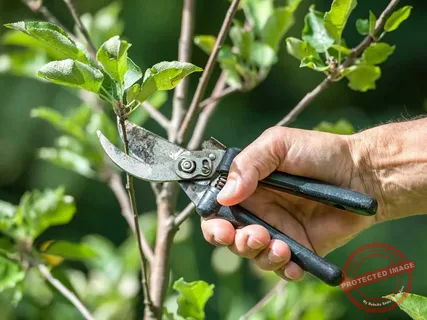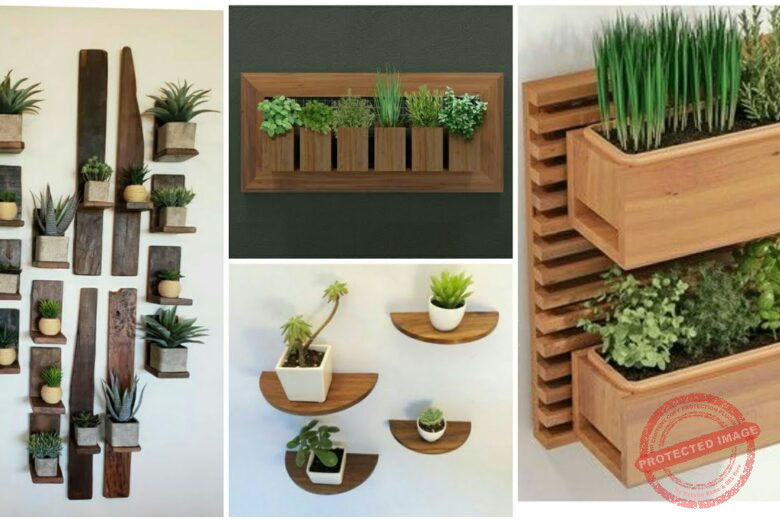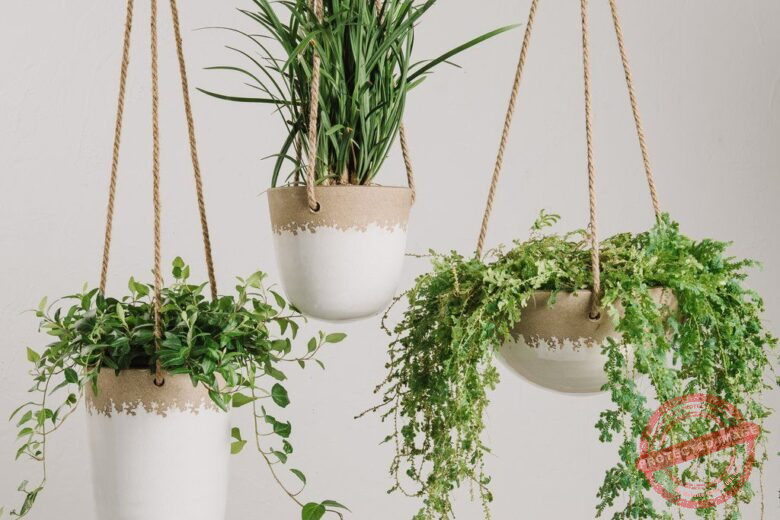When it comes to gardening and landscaping, the type of soil you use plays a crucial role in the success of your plants. Potting soil and topsoil are two common options available to gardeners and homeowners, but they have distinct characteristics and purposes.
In this article, we will delve into the differences between potting soil and topsoil, helping you make an informed decision when it comes to selecting the right option for your specific gardening needs.
Potting Soil vs. Topsoil: Understanding the Differences and Choosing the Right Option
What is Potting Soil?
Potting soil, also known as potting mix or container soil, is a specially formulated medium used for potted plants. It is a blend of various organic materials and amendments designed to provide optimal conditions for container gardening.
Potting soil typically does not contain any actual soil but consists of a mixture of peat moss, perlite, vermiculite, compost, and other organic matter. It is lightweight, well-draining, and rich in nutrients.
Understanding Topsoil
Topsoil refers to the uppermost layer of soil found in natural landscapes. It is the layer that supports plant growth and is rich in organic matter, minerals, and nutrients. Unlike potting soil, topsoil is not specifically formulated for container gardening but is commonly used for landscaping projects, lawn establishment, and creating garden beds.
Composition and Nutrient Content
Potting soil is a blend of different organic materials and amendments, carefully crafted to provide an ideal growing environment for potted plants. It often contains a mixture of peat moss, which improves water retention, perlite or vermiculite for enhanced drainage, compost for nutrient enrichment, and other ingredients to promote root development and overall plant health.
The composition of potting soil can vary depending on the manufacturer and the specific plants it is intended for.
On the other hand, topsoil consists of the natural soil found in the uppermost layer of the earth’s surface. It is composed of a mixture of sand, silt, clay, organic matter, minerals, and microorganisms. While topsoil contains essential nutrients, it may not be as nutrient-rich as potting soil, especially if it has been depleted or lacks organic matter.
Drainage and Water Retention
One of the significant differences between potting soil and topsoil is their drainage and water retention properties. Potting soil is designed to provide excellent drainage while retaining adequate moisture for potted plants. The addition of perlite or vermiculite helps prevent waterlogged conditions, allowing excess water to drain away, which is crucial to prevent root rot.
Topsoil, on the other hand, may have varying drainage properties depending on its composition. It can retain water but may also become compacted and prone to waterlogging in certain situations. Proper grading and amendments may be necessary to ensure adequate drainage when using topsoil for landscaping or gardening purposes.
pH Level and Nutrient Balance
Potting soil is often pH balanced and formulated to suit the needs of specific plants. The pH level of potting soil is typically slightly acidic to neutral, promoting optimal nutrient uptake by plants. It also contains a balanced blend of essential nutrients, ensuring that potted plants receive the required nourishment for healthy growth.
In contrast, the pH level of topsoil can vary depending on the region and specific location it is sourced from. It may range from acidic to alkaline, and the nutrient content can be inconsistent. Before using topsoil for gardening or landscaping, it is advisable to conduct a soil test to determine its pH level and nutrient composition. This will help you make necessary amendments and adjustments to create a favorable environment for your plants.
Sterility and Weed Seeds
Potting soil is typically sterilized during the manufacturing process to eliminate weed seeds, pests, and diseases. This sterilization process ensures a clean and disease-free environment for potted plants, minimizing the risk of plant damage or infestation. However, it also means that potting soil may lack the beneficial microorganisms found in natural topsoil.
Topsoil, being a natural soil, may contain weed seeds, pests, and microorganisms. While this can be advantageous for garden beds and outdoor landscaping, it may also introduce unwanted plants and insects into container gardens. If you choose to use topsoil in containers, it is essential to inspect and prepare the soil properly to minimize the risk of weed growth and pests.
Ideal Applications for Potting Soil
Potting soil is primarily intended for use in containers, pots, hanging baskets, and indoor plants. Its lightweight nature, excellent drainage, and nutrient-rich composition make it ideal for potted plants, where the soil volume and growing conditions are limited. Whether you have flowering plants, herbs, or vegetables in containers, potting soil provides the necessary support and nutrition for healthy plant growth.
Difference between Topsoil and Potting Soil:
Topsoil is the uppermost layer of natural soil found in the ground, containing a mixture of sand, silt, clay, organic matter, minerals, and microorganisms. Potting soil, on the other hand, is a specially formulated medium designed for container gardening, consisting of a blend of organic materials like peat moss, perlite, vermiculite, compost, and other additives. The main difference lies in their composition, purpose, and suitability for specific gardening applications.
Potting Soil vs. Topsoil for Grass:
When it comes to grass, topsoil is often the preferred choice. It provides a solid foundation for the grass to establish its root system, offers adequate nutrients, and helps with water retention. Potting soil, on the other hand, is not typically used for grass as it may be too light, have excessive drainage, and lack the necessary structure for proper root development.
Potting Soil vs. Topsoil for Garden:
For gardens, the choice between potting soil and topsoil depends on the specific needs of the plants. Potting soil is generally recommended for container gardening, while topsoil is suitable for outdoor garden beds.
Potting soil provides better drainage and is lightweight, making it ideal for potted plants. Topsoil, being a natural soil, is better suited for garden beds as it provides the necessary nutrients and structure for plant growth.
Can I Mix Topsoil and Potting Soil?
Yes, it is possible to mix topsoil and potting soil. This combination can be useful when creating custom soil blends for specific gardening projects. By mixing the two, you can achieve a balance between the structure and stability of topsoil and the enhanced drainage and nutrient content of potting soil. This mixture can be particularly beneficial for raised beds or certain outdoor planting situations.
Topsoil or Potting Soil for Raised Beds:
Both topsoil and potting soil can be used for raised beds, depending on your specific requirements. Topsoil is often preferred for its natural composition and nutrient content, which can support healthy plant growth in raised beds.
However, if you want to ensure better drainage and optimize the soil quality, you can mix topsoil with potting soil or use a mixture of potting soil and compost for raised beds.
Can I Use Bagged Topsoil for Potted Plants?
Using bagged topsoil directly for potted plants is not recommended. Bagged topsoil is generally intended for outdoor landscaping purposes and may not provide the necessary drainage or structure needed for container gardening.
It is best to use a high-quality potting soil specifically formulated for potted plants, as it contains the right blend of organic matter, nutrients, and amendments for optimal plant growth.
What is Better: Potting Soil or Topsoil?
The choice between potting soil and topsoil depends on the specific gardening application. Potting soil is better suited for container gardening, providing excellent drainage and nutrient content for potted plants. Topsoil, on the other hand, is more appropriate for outdoor garden beds, offering natural soil composition and supporting healthy plant growth in the ground.
Can I Use Topsoil Instead of Potting Soil?
Using topsoil instead of potting soil is not recommended for container gardening. Topsoil is denser, lacks proper drainage, and may lead to waterlogged conditions in pots or containers. Potting soil, specifically designed for containers, provides better aeration, drainage, and nutrient content, creating an optimal environment for potted plants.
What Happens if You Use Potting Soil in the Ground?
If you use potting soil in the ground, it may not provide the necessary stability and structure required for plants to establish a strong root system. Potting soil is formulated for container gardening, with lightweight materials that optimize drainage.
When used in the ground, potting soil may compact easily, retain excessive moisture, and impede proper root growth. It is best to use topsoil or amend the existing soil in the ground for better results.
Can You Plant Plants in Topsoil?
Yes, you can plant plants directly in topsoil. Topsoil is the natural layer of soil found in the ground and is suitable for planting in garden beds, landscapes, and lawns. It provides the necessary nutrients, structure, and moisture retention for plant growth. However, it’s essential to assess the quality of topsoil and make any necessary amendments to ensure optimal conditions for plant health and growth.
Ideal Applications for Topsoil
Topsoil is commonly used for various outdoor landscaping projects and gardening applications. It is ideal for establishing lawns, creating garden beds, filling raised beds, and improving the overall quality of the soil in your yard.
Topsoil can be used to level uneven terrain, amend poor soil conditions, or provide a foundation for sod installation. Its natural composition and nutrient content make it suitable for a wide range of outdoor planting needs.
Mixing Potting Soil and Topsoil
In some cases, you may find it beneficial to mix potting soil and topsoil to create a custom blend for specific gardening projects. This can be particularly useful when establishing container gardens outdoors or when planting large shrubs and trees.
By combining potting soil’s lightweight and nutrient-rich properties with the structure and stability of topsoil, you can create an optimal growing environment that meets the specific needs of your plants.
How to Choose the Right Soil
Choosing the right soil for your gardening needs requires careful consideration of several factors. Here are some key points to keep in mind when making your selection:
Factors to Consider when Selecting Potting Soil:
- Specific plant requirements (e.g., moisture-loving plants, succulents, or acid-loving plants)
- Container size and type
- Watering frequency and drainage needs
- Organic or synthetic fertilizers preference
- Budget and availability of potting soil options
Factors to Consider when Selecting Topsoil:
- Landscaping or gardening project requirements
- Soil amendment needs
- pH level and nutrient requirements of the plants you intend to grow
- Soil texture and drainage characteristics
- Budget and availability of topsoil options
Maintenance and Care Tips
Regardless of whether you choose potting soil or topsoil, proper maintenance and care are essential for the health and longevity of your plants. Here are some general tips to help you maintain a thriving garden:
- Regularly monitor soil moisture and adjust watering accordingly.
- Apply organic or synthetic fertilizers as needed, following the manufacturer’s instructions.
- Remove weeds and unwanted plants promptly to prevent competition for resources.
- Mulch the soil surface to conserve moisture and suppress weed growth.
- Conduct periodic soil tests to assess nutrient levels and make necessary amendments.
- Provide adequate sunlight and protect plants from extreme weather conditions.
Common Misconceptions
There are a few common misconceptions when it comes to potting soil and topsoil. Let’s address them:
Myth 1: Potting soil and topsoil are interchangeable.
While they may seem similar, potting soil and topsoil have different compositions and purposes. Potting soil is specifically formulated for container gardening, whereas topsoil is intended for outdoor landscaping and garden beds. Each soil type has distinct characteristics that make them suitable for their respective applications.
Myth 2: All potting soils and topsoils are the same.
Not all potting soils and topsoils are created equal. The quality, nutrient content, and composition can vary significantly between different brands and manufacturers. It’s essential to choose reputable brands and read product labels to ensure you are getting a high-quality soil that meets your specific needs.
Can I use potting soil in my garden beds?
While potting soil is primarily intended for container gardening, you can use it in garden beds as well. However, keep in mind that it may be lighter and more porous compared to traditional topsoil, which can affect moisture retention and nutrient availability.
Can I mix potting soil with regular garden soil?
Yes, you can mix potting soil with regular garden soil to improve its structure and nutrient content. This blend can be beneficial for specific plants or gardening projects that require enhanced drainage and nutrition.
Is topsoil the same as garden soil?
Topsoil and garden soil are not the same. Topsoil refers to the uppermost layer of natural soil, while garden soil is a general term for soil mixes or amendments used in gardening. Garden soil may contain a combination of topsoil, compost, peat moss, and other organic matter.
Can I use topsoil for indoor plants?
Topsoil is not recommended for indoor plants or container gardening. It may be too dense and prone to compaction, leading to drainage issues. It is best to use a well-balanced potting soil specifically formulated for indoor plants.
How often should I amend my garden soil with topsoil?
The frequency of amending your garden soil with topsoil depends on various factors, such as soil quality, plant nutrient requirements, and the specific needs of your garden. Conduct soil tests periodically to assess the nutrient levels and make amendments as necessary.
Conclusion
In conclusion, understanding the differences between potting soil and topsoil is crucial for successful gardening and landscaping endeavors. Potting soil is designed for container gardening, offering excellent drainage, optimal moisture retention, and balanced nutrition for potted plants. Topsoil, on the other hand, is suitable for outdoor applications, such as establishing lawns, creating garden beds, and improving soil quality.
By considering factors such as plant requirements, drainage, pH level, and nutrient balance, you can make an informed decision when selecting the right soil for your specific needs. Whether you opt for potting soil, topsoil, or a combination of both, proper maintenance and care will ensure the health and vitality of your plants, creating a flourishing garden or landscape.




It’s good to know that topsoil is good for garden beds. My close friend was at my house yesterday afternoon, and she talked about how she wants to look into starting a garden in her backyard sometime this month, so she wants to make sure she gets the right soil. I’ll pass this information along to her so she can look into getting topsoil.